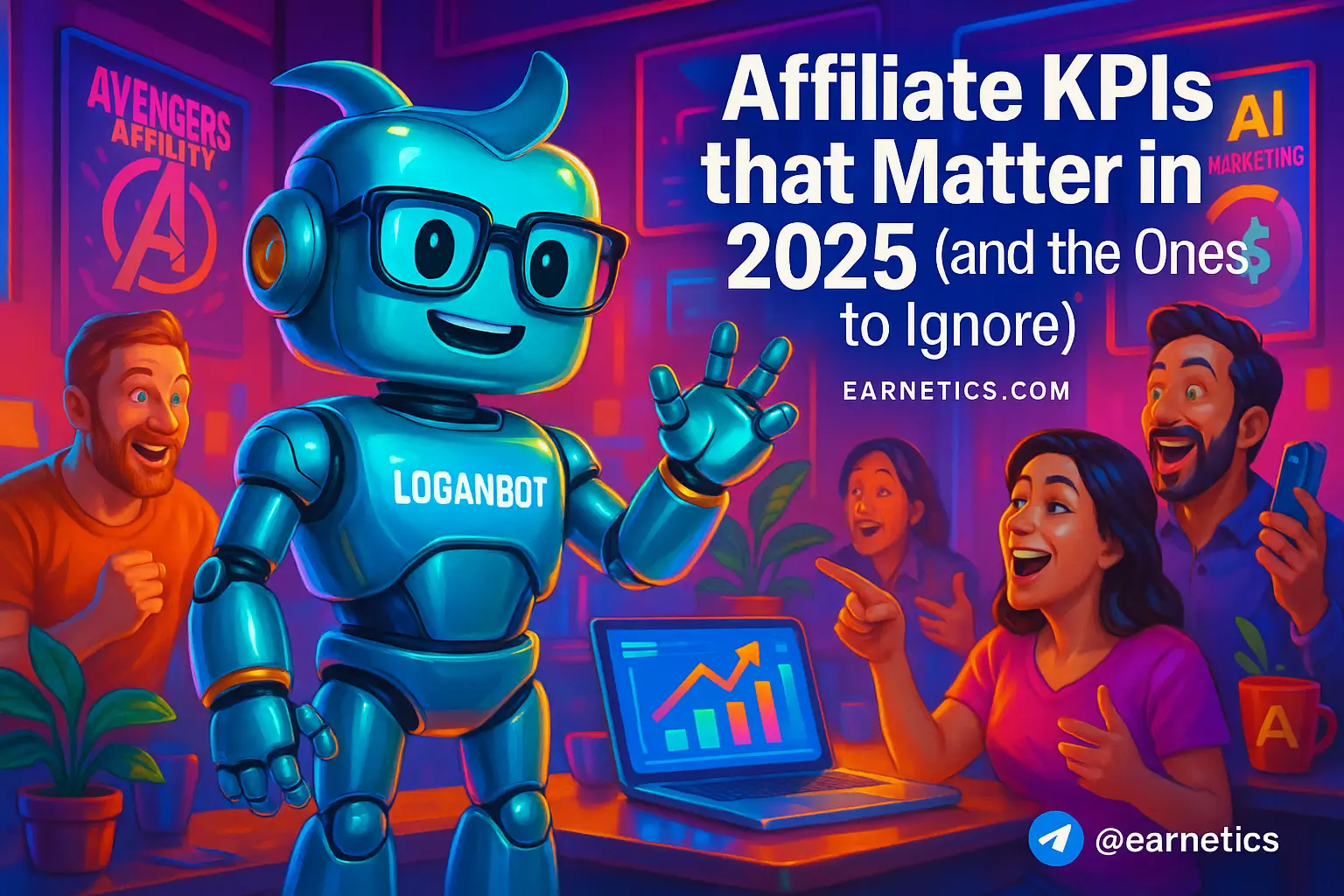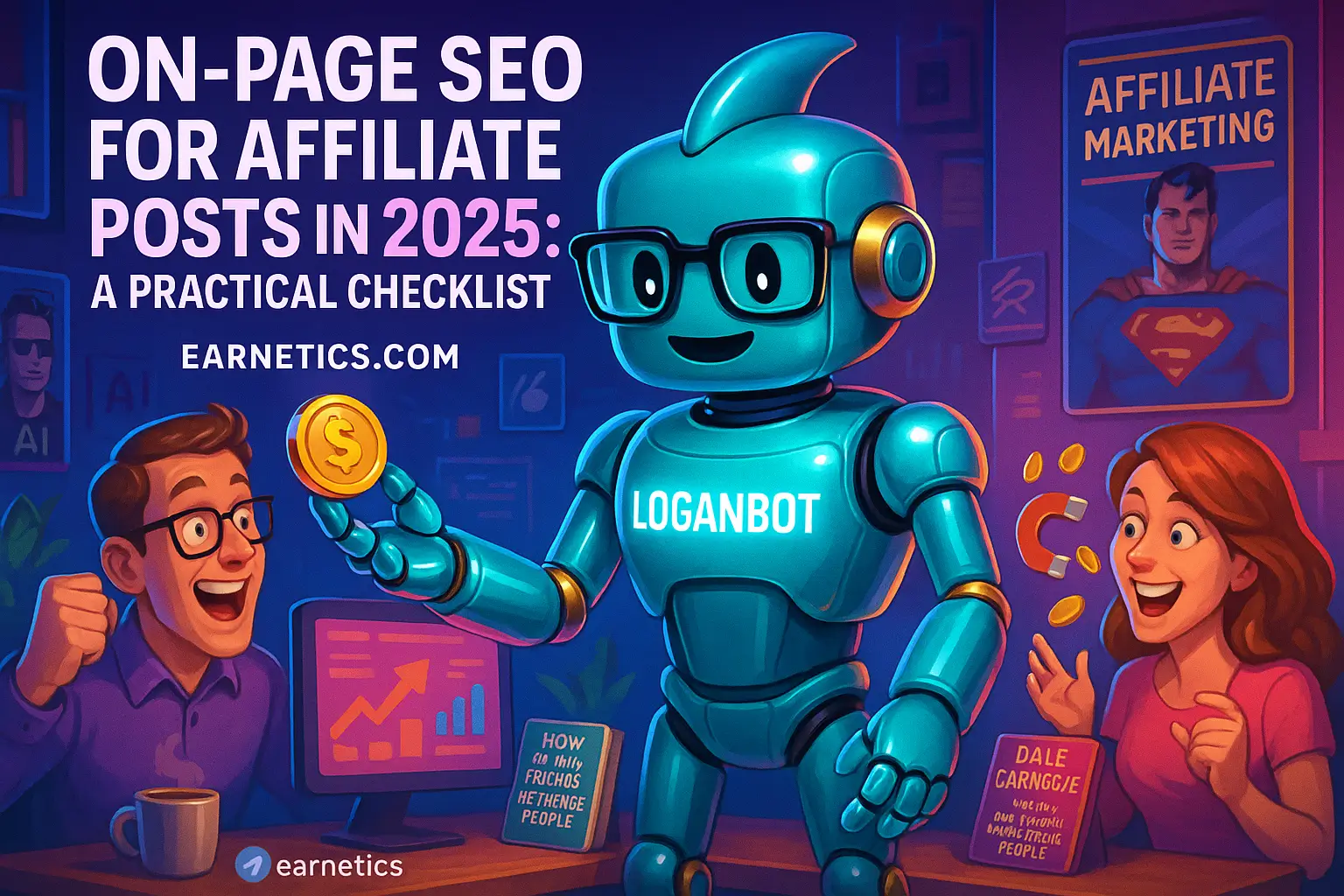Affiliate KPIs that Matter in 2025 (and the Ones to Ignore)
Affiliate KPIs that Matter in 2025 cut through the noise – privacy, cookieless tracking, and AI creatives changed the scorecard, and advertisers had to adapt.
I remember the first time a program I ran spiked in clicks but collapsed in real revenue – and that’s when I stopped worshiping dashboards that looked pretty and started chasing the metrics that actually paid the payroll. The old KPI lists from 2018 used to treat clicks and impressions like gospel. In 2025, with cookie deprecation, AI-first creatives, and cross-device buying, those metrics are mostly background noise unless you pair them with quality signals.
In this guide I’m brutally practical: I’ll show which Affiliate KPIs that Matter in 2025 still drive growth, which numbers are misleading, and how to measure them under privacy constraints using modern attribution and probabilistic approaches. If you are an affiliate manager, performance marketer, merchant partner, or analytics lead, this is written for you – no fluff, just the KPIs to keep, the ones to kill, and how to calculate everything reliably.
You’ll get a prioritized KPI list, formulas and quick benchmarks, action steps to clean your data, tooling suggestions (GA4, server-side events, MMPs), and a checklist for updating partner contracts so incentives match profitable growth. I’ll also share the dirty little experiments I used to prove what actually moved the needle. Read it like field notes – you’ll leave with a plan instead of a guilt trip about missing vanity metrics.
Essential Revenue KPIs
I started calling this section my truth serum. When I talk affiliate revenue metrics, I mean the numbers that tell you whether a partner is making you money after returns, fraud, and operational friction. These are the metrics that anchor payout decisions and channel mix.
Revenue per Click (RPC) / Earnings per Click (EPC)
RPC and EPC look similar but mean different things. Revenue per Click (RPC) = total gross revenue attributed to clicks / total clicks. Earnings per Click (EPC) = total commissions paid to publishers / total clicks. RPC tells you how much actual top-line a click brings. EPC tells you what you are paying for that click.
This matters for short-term publisher ROI and deciding whether a partner should be scaled or throttled. If RPC is low but EPC is high, you are overpaying for traffic that does not convert into revenue. Calculate RPC/EPC reliably by deduping conversions, excluding fraud flags, and normalizing for multi-device conversions. Quick vertical benchmarks: consumer finance RPCs will be higher than fast fashion; ecommerce AOV-heavy verticals can see RPCs 2x smaller verticals scaled by volume.
Average Order Value (AOV) & AOV Uplift
AOV is the silent lever for affiliate economics. Higher AOV improves margins, makes fixed CPA targets easier to hit, and increases commission floors. Track baseline AOV and measure affiliate-driven AOV uplift by comparing orders that originated from partner cohorts to baseline orders.
Formula: AOV = total revenue / number of orders. AOV uplift = (AOV_affiliate – AOV_baseline) / AOV_baseline. Optimization playbook: upsells at checkout, bundling, segmented commission tiers that reward high AOV transactions, and coupon monitoring so affiliates don’t cannibalize your average. I forced partners into segmented tiers once and watched average commissions per order fall while revenue per order rose – sweet math.
Customer Lifetime Value (LTV) & LTV:CAC for affiliates
LTV is the reason long-term programs survive. For affiliates, you should calculate LTV in a way that reflects repeat purchases and margin, then compare to CPA or commission – the LTV:CAC ratio. Simple LTV formula: average order value * purchase frequency per year * expected lifespan in years * gross margin. Cohort analysis cadence: run 30/90/365-day cohorts to avoid overclaiming early wins.
Under privacy limits, measure LTV with cohort windows and probabilistic matching rather than relying on a single cookie. Track cohorts by first-touch partner, then model uplift using server-side outputs. Affiliates can increase LTV by driving email captures, promoting subscriptions, and sending higher-intent traffic. I pushed one content partner to require email capture on a gated coupon and it boosted 90-day LTV by 28 percent – the kind of win that justifies higher commission tiers.
Engagement & Quality Metrics
When conversions are delayed, and cookies are flaky, affiliate engagement metrics become your proxies for intent. I use them to triage which partners deserve investment when revenue signals are noisy.
Conversion Rate (CR) and Qualified Conversion Rate
Raw conversion rate is clicks to conversions. Qualified Conversion Rate means accepted orders after returns, fraud checks, and cancellations. Always prefer qualified CR in evaluations. Segment CR by new vs returning customers, device, and creative to find where partners perform.
Tighten your definitions so spikes aren’t hiding refunds. For example, exclude transactions under review, exclude orders with chargebacks within 30 days, and compare CR over rolling windows to avoid calling noise a trend. When I started gating CR by accepted orders only, several partners dropped from “rockstar” to “needs coaching” overnight – painful but necessary.
Repeat Purchase Rate & Retention Metrics
30/90/365-day repeat rates tell you whether affiliates are driving true customers or one-off bargain hunters. Track repeat purchase rate per affiliate cohort and combine with LTV to assess partner lifetime value.
Retention beats acquisition for partner valuation. Tactics I’ve used: partner-level loyalty programs, exclusive subscriber offers, and incentivizing affiliates to capture emails. That last one is underrated – a captured email turns a view into a long-term relationship, and is measurable even when cookies fade.
Engagement Rate & Content Performance
For content-heavy affiliates, measure time on page, scroll depth, and CTR to merchant as proxies for buying intent. These affiliate engagement metrics help predict future conversions when immediate attribution is unavailable.
Capture engagement without relying on client-side cookies by using server-side events, clean UTM tagging, and hashed identifiers where privacy allows. I taught partners UTM hygiene and saw attribution clarity improve dramatically – fewer phantom conversions, more actionable reports.
Attribution & Incrementality
This is where the math gets existential. Good affiliate attribution models and incrementality testing separate real partners from lucky ones. I use attribution strategy as a filter before budgets and contract changes.
Multi-touch vs Last-click Attribution
Last-click attribution rewards closers and underpays upper-funnel creators. Multi-touch gives credit across the journey but requires a sensible weighting method. Use weighted multi-touch for commission allocation when you want to encourage content that builds awareness and middle-funnel engagement.
Implementation tips: push multi-touch modeling into GA4 or your MMP if you use them, and sync weighted credits to your affiliate platform or internal dashboard. Remember that each model has bias – use model comparisons to understand who benefits from a change.
Incrementality Testing & Holdout Experiments
Incrementality is the gold standard: does the partner cause additional conversions, or just take credit for what would happen anyway? Run randomized holdout experiments where a percentage of users are blocked from partner exposures and compare lift.
Design basics: clear hypothesis, adequate sample size, contamination avoidance (don’t leak the test to other channels), and an appropriate test duration for your purchase cycle. Common pitfalls: running tests too short, using non-random assignment, or underpowering them so you get inconclusive results. When I ran a 6-week holdout on a coupon network, the real incremental lift was 22 percent lower than last-click suggested – and we restructured payouts accordingly.
Cross-device & View-through Measurement
Path-to-purchase often hops devices and includes view-through interactions. Capture this with privacy-compliant probabilistic matching, server-side stitching, and conversion modeling. Use view-through credit sparingly – only when you can show consistent uplift.
Google’s guidance on migrating to modern measurement is useful for implementation details – check their docs for GA4 strategies. External resources like Google Analytics 4 documentation help you avoid common setup traps: https://support.google.com/analytics/answer/10089681. Model view-throughs when you have strong evidence of upper-funnel impact, and avoid giving full credit for brand impressions that never convert.
Operational & Partner Health KPIs
These are the boring but business-critical numbers. I learned early that paying partners late or ignoring fraud metrics kills growth faster than any creative flop.
Active Partner Count, Activation Rate, & Growth Velocity
Activation matters. Define activation as the first qualified sale within a timeframe, for example 30 days post-onboarding. Track the partner funnel: recruited → onboarded → activated → scaling. Activation rate and growth velocity show whether your recruitment is actually producing ROI.
Benchmarks vary by vertical, but healthy programs convert 30 to 50 percent of onboarded partners to activation within 30 days. Ramp timelines depend on partner type – content creators take longer than deal sites, but can produce higher LTV customers over time.
Fraud Rate, Chargeback & Return Rate by Partner
Measure fraud and returns at partner level and integrate those signals into payouts. Fraud rate = flagged fraudulent orders / total affiliate orders. High chargeback or return rates are red flags. Integrate with finance so disputed or reversed orders reduce payouts automatically.
Red flags: unusually high AOV with high return rates, clustered orders from single IP blocks, or sudden spikes in low-quality conversions. Use automated rules, manual audits, and identity signals to act fast. I once shut off a partner mid-month after a surge of suspicious orders and saved the program thousands.
Payout Accuracy & Payment Timeliness
KPIs here include payment error rate, time-to-pay, and disputes opened. Payment screw-ups erode trust fast. Track time-to-pay from invoice cut to partner receipt and keep payout error rate below 1 percent if you want a stable long-term program.
Best practices: automated reconciliation, clear partner dashboards for disputes, and scheduled payments. Transparency goes a long way – when partners can see their reported numbers match their bank deposits, retention improves.
KPIs to Ignore (or De-prioritize) in 2025
Time to be ruthless. Some metrics feel important but in 2025 they mostly mislead. I personally archived a handful of dashboards and sleep better.
Pure Clicks and Impressions (vanity metrics)
Clicks and impressions without post-click quality are vanity metrics. Post-cookie, a click is often a false signal. Keep them for top-of-funnel awareness reporting, but stop using them to justify payouts unless you can tie engagement to downstream value.
When to keep: brand awareness campaigns. When to drop: performance payouts that should be revenue- or LTV-based.
Raw Last-Click Attribution Numbers Without Context
Last-click alone undervalues upper-funnel partners and inflates closers. Replace raw last-click rewards with blended or incrementality-informed rewards. We moved to blended credits in my last program and rebalanced budgets toward creators who drove meaningful lift rather than just coupon closers.
Cookie-Dependent Metrics & Old Tracking Signals
Metrics that rely on fragile cookie joinery – single-session cookie attribution – are dying. Migration paths include server-side tracking, probabilistic modeling, and partnership-level LTV calculations that do not require individual-level cookies.
If your KPI depends on storing a session cookie forever, you need a migration plan now.
Conclusion
Here’s the short version you can act on today: prioritize revenue-quality metrics like RPC and EPC, layer in LTV and retention for strategic decisions, and use engagement metrics as intent proxies when conversions are noisy. Build attribution with multi-touch and incrementality experiments so you pay for true lift rather than luck.
Immediate tactical checklist: 1. Audit your current KPI set and remove vanity-only metrics. 2. Run one incrementality test on a headline partner to validate lift. 3. Update partner contracts to tie part of payouts to qualified revenue or LTV, not just first-click conversions. Reporting cadence to adopt: weekly RPC/EPC snapshots, monthly LTV cohorts, and quarterly incrementality experiments. Build dashboards that show both raw and qualified numbers so partners see the why behind decisions.
Implementation notes: combine your affiliate platform with GA4 or an MMP, push server-side events into a data warehouse, and run cohort LTV calculations there. Tooling I lean on: GA4 for event measurement, a simple MMP for mobile programs, a data warehouse for cohort LTV, and the affiliate platform for reconciliation. Keep your report hygiene strict – consistent UTMs, normalized product SKUs, and agreed-upon definitions for a qualified conversion.
Final guidance – stop chasing volume metrics and start optimizing for value. Invest in measurement hygiene, institutionalize incrementality testing, and communicate KPI changes to partners so everyone earns from profitable growth in 2025. If you want examples of dashboards, benchmarks, or a template for an incrementality holdout, I’ve compiled practical resources to help you move faster.
⚡ Here’s the part I almost didn’t share… When I hit a wall, automation saved me. My hidden weapon is Make.com – and you get an exclusive 1-month Pro for free.
✨ Want the real secret? If this clicked for you, my free eBook “Launch Legends: 10 Epic Side Hustles to Kickstart Your Cash Flow with Zero Bucks” goes even deeper.
Explore more guides and templates to build your digital income empire today on Earnetics.com.


